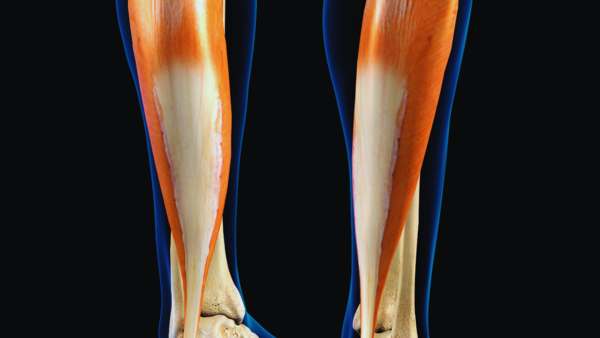Imagine a simple seated exercise could significantly impact your blood sugar levels. New research suggests that performing calf raises while seated can help reduce blood sugar almost immediately. This low-effort activity, involving rhythmically lifting your heels while keeping the balls of your feet on the floor, engages your calf muscles even while seated. Health experts emphasize that these movements activate the soleus muscle, a key player in regulating blood sugar within the body.

What makes this technique particularly appealing is its accessibility. It requires minimal effort, no special equipment, and can be done without even standing up. Individuals with limited mobility or those leading sedentary lives can easily incorporate this simple exercise into their daily routines.
For individuals with consistently elevated blood sugar or those in prediabetic stages, integrating these movements during extended periods of sitting – whether watching TV, working at a desk, or even during car travel – can yield significant improvements over time.
A peer-reviewed journal published in the National Library of Medicine highlights the effectiveness of the soleus pushup, a simple seated calf raise, in boosting local oxidative metabolism and improving blood sugar control. Unlike most muscles that tire quickly, the soleus muscle is metabolically designed for efficient, long-lasting activity. The study demonstrated that this movement increases glucose uptake without depleting glycogen stores, making it an effective strategy for managing post-meal blood sugar spikes.

Many people underestimate the importance of the soleus muscle, often overshadowed by larger leg muscles like the quadriceps. However, a recent peer-reviewed study published in iScience, hosted by the National Institutes of Health (NIH), describes the soleus muscle as a metabolic powerhouse. Unlike other muscles, the soleus muscle can sustain low-intensity contractions for extended periods without fatigue, aiding in glucose and lipid regulation.
The study introduced the term "soleus pushup" (SPU) to describe this seated movement, revealing that it boosts oxidative metabolism even more than standing or walking. Researchers observed an average reduction in blood glucose levels by 52% and a 60% reduction in insulin levels when the SPU was performed during prolonged sedentary periods.
No special equipment, standing, or gym membership is needed. Simply perform soleus pushups while seated, lifting your heels up and down slowly, to improve blood glucose and fat metabolism throughout the day. Researchers emphasized the benefits of this exercise even during prolonged periods of sitting, such as while working at an office or watching television.
For individuals with prediabetes, Type 2 diabetes, or sedentary lifestyles, this simple movement offers a low-effort, high-impact addition to daily routines. Study participants demonstrated glucose reductions of up to 52% in some cases when consistently using the soleus pushup method.
While this exercise is not a substitute for healthy eating, medication, or regular physical activity, experts suggest that soleus activation can complement existing glucose control strategies. Consider it a biological trick, silently working in your favor as you sit.
Newer articles
Older articles
 Moto G54 Gets Significant Price Cut in India, Making Budget Smartphone Even More Appealing
Moto G54 Gets Significant Price Cut in India, Making Budget Smartphone Even More Appealing
 Africa's Rift Valley: Mantle Upwelling Drives Continent's Split and Birth of New Ocean
Africa's Rift Valley: Mantle Upwelling Drives Continent's Split and Birth of New Ocean
 X Cracks Down: Over Half a Million Indian Accounts Suspended for Policy Breaches
X Cracks Down: Over Half a Million Indian Accounts Suspended for Policy Breaches
 Vijay Sethupathi Apologizes Amid Controversy Over Son Surya's Debut Film 'Phoenix'
Vijay Sethupathi Apologizes Amid Controversy Over Son Surya's Debut Film 'Phoenix'
 Jadeja's Accuracy Questioned: Ex-India Pacer Slams Spin Strategy in England Test Loss
Jadeja's Accuracy Questioned: Ex-India Pacer Slams Spin Strategy in England Test Loss
 IRCTC's AI Chatbot Revolutionizes Train Ticket Booking, Refunds, and Information Access
IRCTC's AI Chatbot Revolutionizes Train Ticket Booking, Refunds, and Information Access
 Ashada Gupt Navratri 2025: Unveiling Dates, Sacred Rituals & Hidden Significance of the Monsoon Festival
Ashada Gupt Navratri 2025: Unveiling Dates, Sacred Rituals & Hidden Significance of the Monsoon Festival
 Google Maps Enhances Directional Accuracy with Fused Orientation Provider Update
Google Maps Enhances Directional Accuracy with Fused Orientation Provider Update
 xAI to Open Source Grok, Democratizing Access to Musk's AI Chatbot
xAI to Open Source Grok, Democratizing Access to Musk's AI Chatbot
 Android Users Urged to Patch Now: Critical Security Flaws Expose Devices to Attacks
Android Users Urged to Patch Now: Critical Security Flaws Expose Devices to Attacks